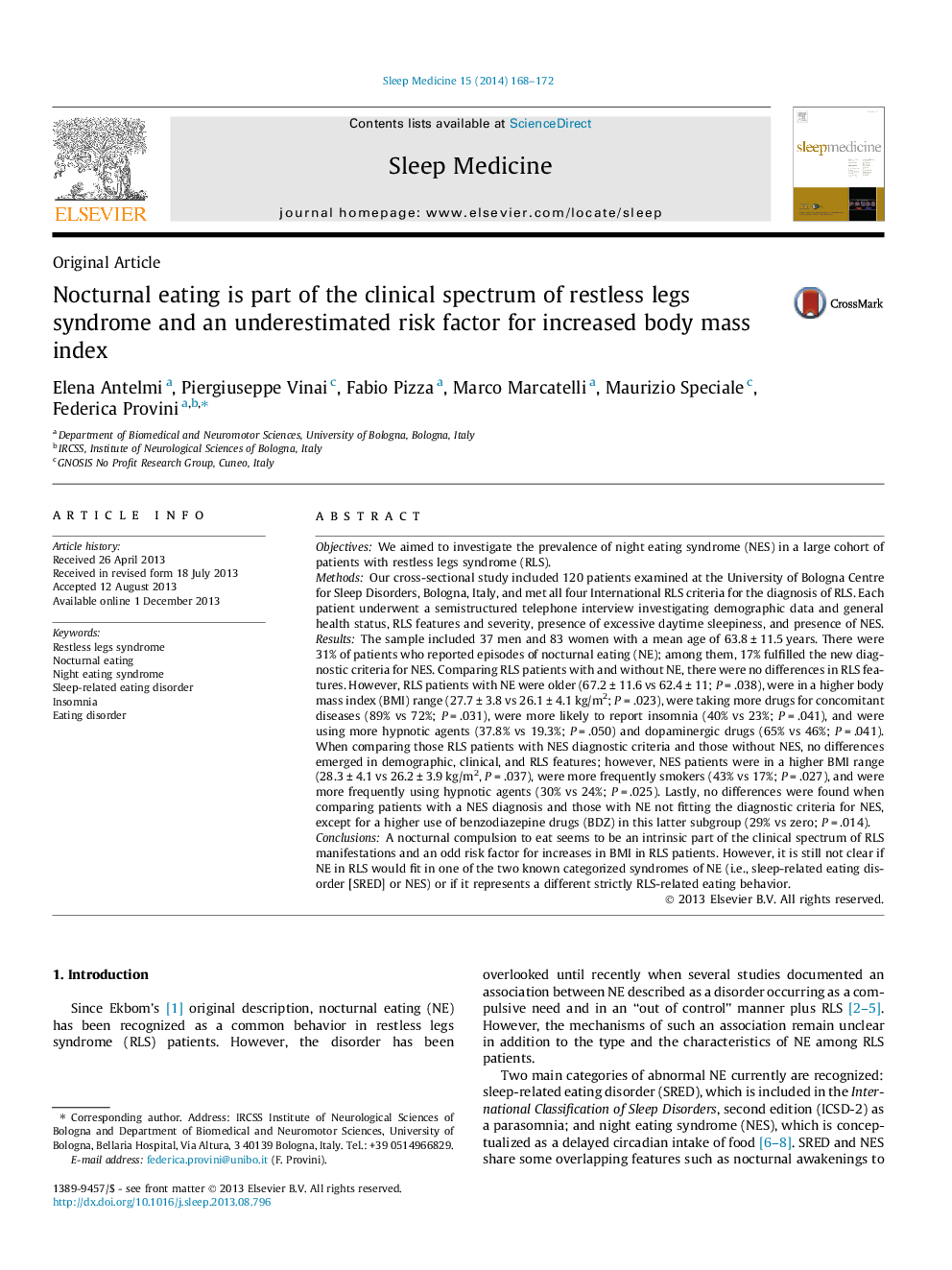| کد مقاله | کد نشریه | سال انتشار | مقاله انگلیسی | نسخه تمام متن |
|---|---|---|---|---|
| 3176237 | 1200254 | 2014 | 5 صفحه PDF | دانلود رایگان |
ObjectivesWe aimed to investigate the prevalence of night eating syndrome (NES) in a large cohort of patients with restless legs syndrome (RLS).MethodsOur cross-sectional study included 120 patients examined at the University of Bologna Centre for Sleep Disorders, Bologna, Italy, and met all four International RLS criteria for the diagnosis of RLS. Each patient underwent a semistructured telephone interview investigating demographic data and general health status, RLS features and severity, presence of excessive daytime sleepiness, and presence of NES.ResultsThe sample included 37 men and 83 women with a mean age of 63.8 ± 11.5 years. There were 31% of patients who reported episodes of nocturnal eating (NE); among them, 17% fulfilled the new diagnostic criteria for NES. Comparing RLS patients with and without NE, there were no differences in RLS features. However, RLS patients with NE were older (67.2 ± 11.6 vs 62.4 ± 11; P = .038), were in a higher body mass index (BMI) range (27.7 ± 3.8 vs 26.1 ± 4.1 kg/m2; P = .023), were taking more drugs for concomitant diseases (89% vs 72%; P = .031), were more likely to report insomnia (40% vs 23%; P = .041), and were using more hypnotic agents (37.8% vs 19.3%; P = .050) and dopaminergic drugs (65% vs 46%; P = .041). When comparing those RLS patients with NES diagnostic criteria and those without NES, no differences emerged in demographic, clinical, and RLS features; however, NES patients were in a higher BMI range (28.3 ± 4.1 vs 26.2 ± 3.9 kg/m2, P = .037), were more frequently smokers (43% vs 17%; P = .027), and were more frequently using hypnotic agents (30% vs 24%; P = .025). Lastly, no differences were found when comparing patients with a NES diagnosis and those with NE not fitting the diagnostic criteria for NES, except for a higher use of benzodiazepine drugs (BDZ) in this latter subgroup (29% vs zero; P = .014).ConclusionsA nocturnal compulsion to eat seems to be an intrinsic part of the clinical spectrum of RLS manifestations and an odd risk factor for increases in BMI in RLS patients. However, it is still not clear if NE in RLS would fit in one of the two known categorized syndromes of NE (i.e., sleep-related eating disorder [SRED] or NES) or if it represents a different strictly RLS-related eating behavior.
Journal: Sleep Medicine - Volume 15, Issue 2, February 2014, Pages 168–172
